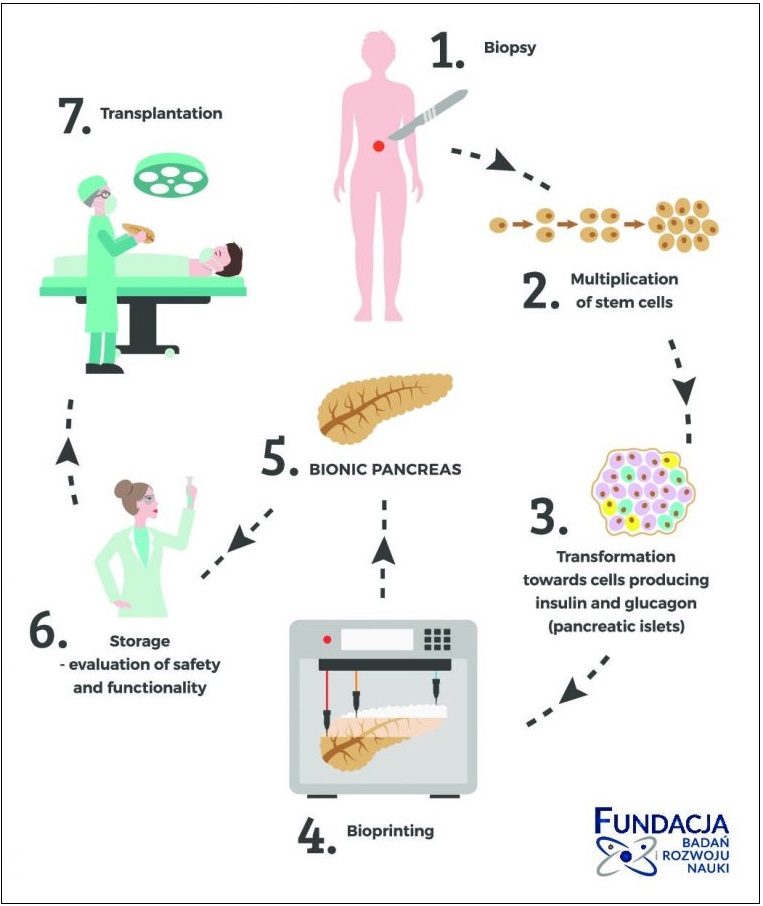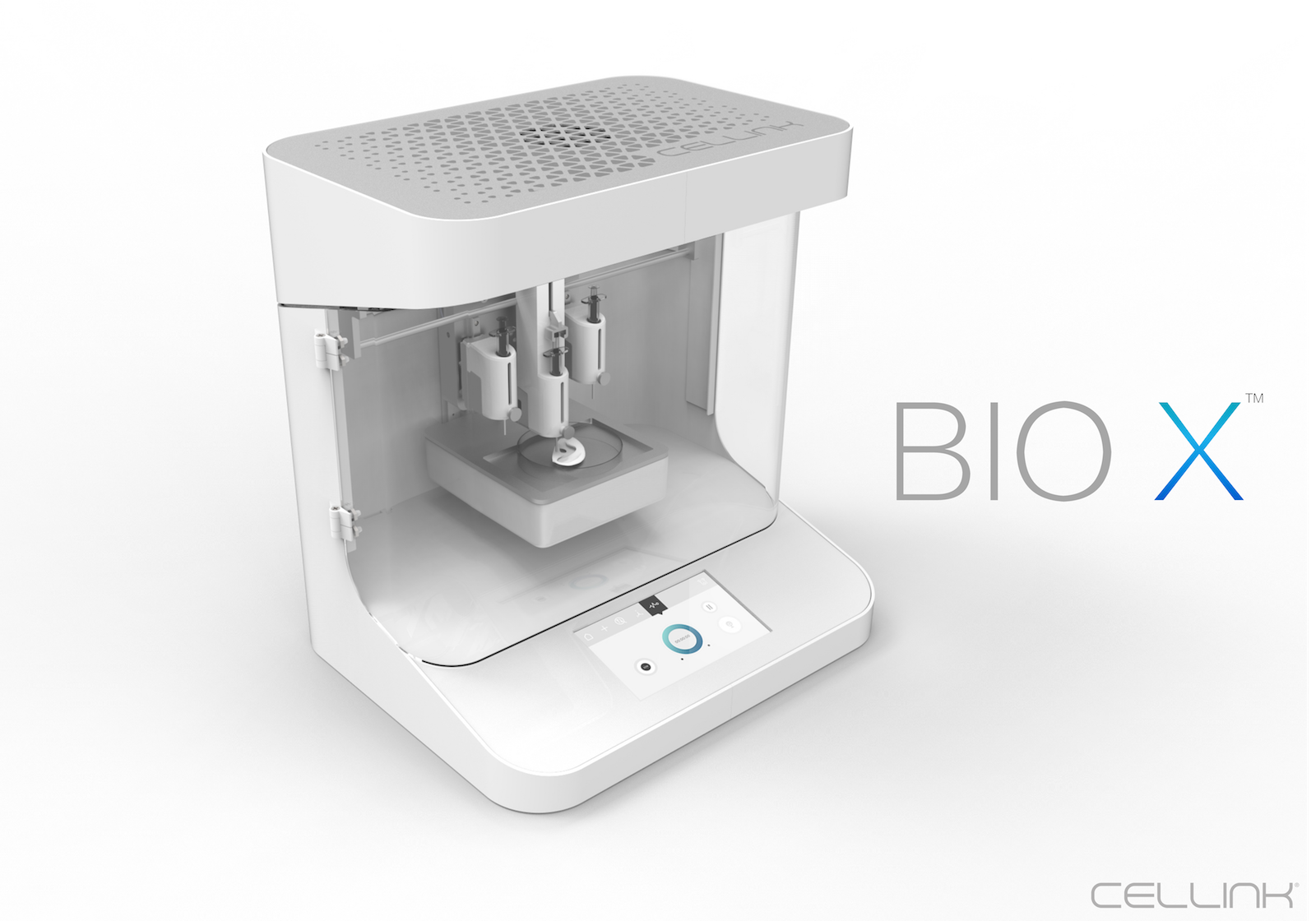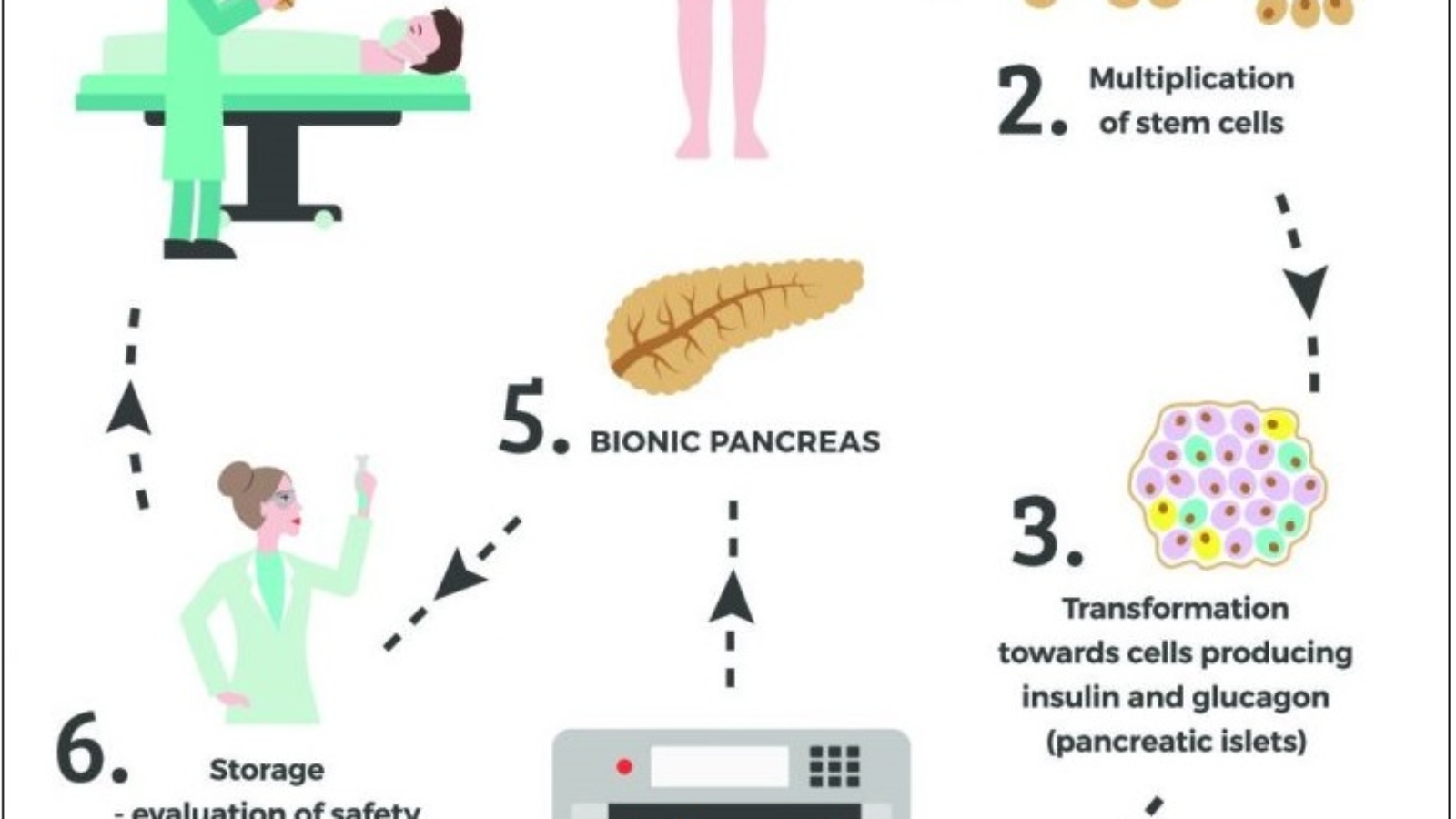Scientists from the Foundation for Research and Science Development in Poland (Fundacja Badań I Rozwoju Nauki or Fundacja BIRN) are using 3D bioprinting to create a bionic pancreas.
In an effort to combat diabetes, Michał Wszoła MD, Ph.D., Principal investigator at Fundacja BIRN, is leading a project to 3D bioprint scaffolds using pancreatic tissue or insulin-producing cells to form an artificial pancreas.
Although current methods of insulin production, that is, an insulin pump i.e., intensive insulinotherapy, and pancreas transplantation can treat type I diabetes, the scientists have identified limitations such as organ shortages and post-surgical complications.
“The goal of the project is to create a functional pancreas. One that can be transplanted to the patient without major problems,” said Professor Wszoła.
“It will enable people affected by diabetes to function normally, and more importantly prevent the development of secondary complications, which are the causes of most deaths.”

Creating a bionic pancreas
According to the World Health Organization (WHO) over 60 million people in European suffer from diabetes, and this number continues to increase. To address this problem, in 2015, Fundacja BIRN researchers established the BIONIC consortium, which includes embers such as Swedish 3D bioprinter and materials developer CELLINK.
In 2017, the consortium’s bionic pancreas research officially commenced following funding from the National Center for Research and Development under the STRATEGMED III program.
Manufacturing on Demand
“It is commonly known that the number of transplants is growing, the demand for organs exceeds the amount that can be obtained from donors,” added Professor Wszoła.
“In addition, after pancreas transplantation, the operation itself carries the risk of surgical complications, and the continuation of life after pancreas transplantation is associated with the continuous intake of immunosuppressive drugs.”
“A pancreas created from its own transformed stem cells eliminates these two major problems.”
3D bioprinting artificial pancreatic tissue
As of 2018, CELLINK’s Bio X bioprinter from CELLINK is being used at Fundacja BIRN to print living cells and pancreatic islet – a portion of tissue – which will eventually form a bionic pancreas. The project is now preparing for its first pre-clinical animal trials which will start later this year. Hector Martinez, co-founder and CTO, explained, “We are so extremely excited about this, especially since the application is printing a pancreas.”
“There is such major need for artificial pancreatic tissue today and the development has not been moving fast enough. While we do understand that this will take some time, we do recognize that this is a tremendously important application.”

* This article is reprinted from 3D Printing Industry. If you are involved in infringement, please contact us to delete it.
Author: Tia Vialva


Leave A Comment